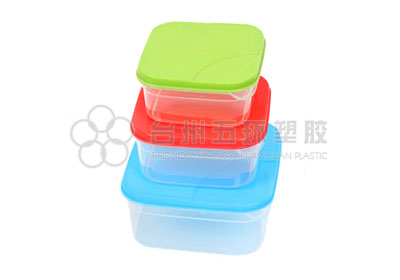Add:North Industrial District, HuangYan,TaiZhou,ZheJiang Province,China
Phone: +86-576-84051178
Fax: +86-576-84050560
Mail: shuangxibusiness@ vip.163. com

Plastic products: It is made of synthetic resin as the […]
Plastic products: It is made of synthetic resin as the basic material, with fillers, plasticizers, colorants and stabilizers added in a certain proportion, after mixing, plasticizing, and under certain pressure and temperature.
(1) Thermoplastics
1. Low density polyethylene
Advantages: light weight, low moisture absorption, good insulation, strong extensibility, strong transparency, good cold resistance, and strong chemical stability;
Disadvantages: low strength, poor aging resistance.
Uses: making gears, bearings, and cable sheaths.
2. High density polyethylene
Advantages: good heat resistance, good cold resistance, good wear resistance, good chemical stability, corrosion resistance, low water absorption and water vapor permeability, high surface hardness, and good dimensional stability;
Disadvantages: poor aging resistance.
Purpose: To make single-mouth bottles, transport boxes, storage tanks, cable sheaths, and pressure pipes.
3. Polypropylene
Advantages: light weight, no water absorption, good dielectric properties, good chemical stability, and good heat resistance;
Disadvantages: poor light resistance, easy aging, low temperature toughness and poor dyeing performance.
Uses: manufacture flanges, gears, fan impellers, pump impellers, joints, various chemical containers, pipelines, valve fittings, pump casings.
4. PTFE
Advantages: good high temperature resistance, good low temperature resistance;
Disadvantages: low strength, strong cold flow.
Purpose: To make anti-friction sealing parts, chemical corrosion-resistant parts, heat exchangers, tubes, rods, plate products and various parts and insulating materials.

5. Polystyrene
Advantages: high rigidity, low density, relatively transparent at room temperature, no water absorption, corrosion resistance, high electrical resistance, etc.;
Disadvantages: poor impact resistance, intolerance to boiling water, poor oil resistance.
Uses: manufacturing instrument parts and equipment shells in the electronics industry; storage tanks, pipes, and elbows in the chemical industry.
6. Engineering plastics
Advantages: It has the mixed characteristics of "hardness, toughness and rigidity" and good comprehensive mechanical properties.
Purpose: Manufacturing gears, pump impellers, bearings, pipelines, storage tank linings, motor shells, instrument shells, instrument panels, battery tanks and water tank shells, etc.
(2) Thermosetting plastics
1. The advantages of phenolic resin: resistance to weak acid and weak alkali, high temperature resistance.
Uses: making refractory materials, friction materials and adhesives.
2. Epoxy resin
Advantages: good insulation performance, heat resistance, cold resistance, high chemical stability, good molding process performance, is a very good adhesive.
3. Furan resin
Advantages: resistant to strong acids, alkalis and organic solvents, good flame retardancy, and less smoke during combustion.
Disadvantages: The curing process is inconvenient and generally requires post-heating treatment.
4. Unsaturated polyester resin
Advantages: excellent process performance, curing and molding at room temperature, especially suitable for large-scale and on-site manufacturing of glass fiber reinforced plastic products, the comprehensive performance of the cured resin is good;
Disadvantages: large volume shrinkage.
https://www.wuhuanplastic.com/